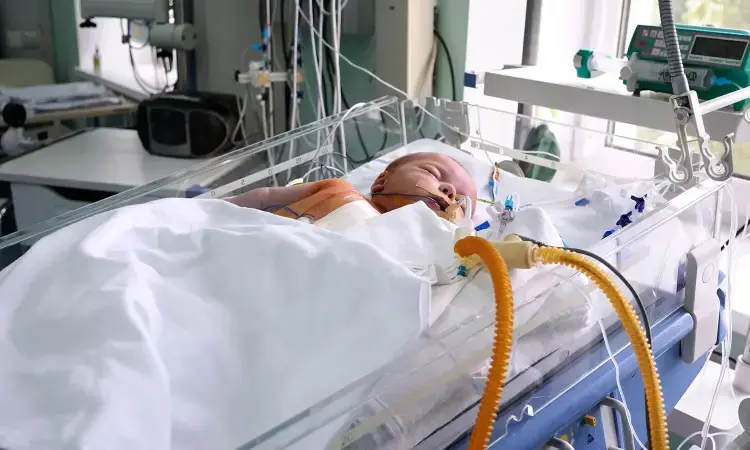- Home
- Medical news & Guidelines
- Anesthesiology
- Cardiology and CTVS
- Critical Care
- Dentistry
- Dermatology
- Diabetes and Endocrinology
- ENT
- Gastroenterology
- Medicine
- Nephrology
- Neurology
- Obstretics-Gynaecology
- Oncology
- Ophthalmology
- Orthopaedics
- Pediatrics-Neonatology
- Psychiatry
- Pulmonology
- Radiology
- Surgery
- Urology
- Laboratory Medicine
- Diet
- Nursing
- Paramedical
- Physiotherapy
- Health news
- Fact Check
- Bone Health Fact Check
- Brain Health Fact Check
- Cancer Related Fact Check
- Child Care Fact Check
- Dental and oral health fact check
- Diabetes and metabolic health fact check
- Diet and Nutrition Fact Check
- Eye and ENT Care Fact Check
- Fitness fact check
- Gut health fact check
- Heart health fact check
- Kidney health fact check
- Medical education fact check
- Men's health fact check
- Respiratory fact check
- Skin and hair care fact check
- Vaccine and Immunization fact check
- Women's health fact check
- AYUSH
- State News
- Andaman and Nicobar Islands
- Andhra Pradesh
- Arunachal Pradesh
- Assam
- Bihar
- Chandigarh
- Chattisgarh
- Dadra and Nagar Haveli
- Daman and Diu
- Delhi
- Goa
- Gujarat
- Haryana
- Himachal Pradesh
- Jammu & Kashmir
- Jharkhand
- Karnataka
- Kerala
- Ladakh
- Lakshadweep
- Madhya Pradesh
- Maharashtra
- Manipur
- Meghalaya
- Mizoram
- Nagaland
- Odisha
- Puducherry
- Punjab
- Rajasthan
- Sikkim
- Tamil Nadu
- Telangana
- Tripura
- Uttar Pradesh
- Uttrakhand
- West Bengal
- Medical Education
- Industry
Early Epoprostenol Use Effectively Treats Pulmonary Hypertension in Congenital Diaphragmatic Hernia: Study

A recent retrospective study published in the The Journal of Pediatrics unveiled the potential benefits of using epoprostenol, a vasodilator, in managing pulmonary hypertension (PH) in infants diagnosed with congenital diaphragmatic hernia (CDH) who require extracorporeal life support (ECLS). The study evaluated 57 infants at a single institution between 2013 and 2023 by exploring how the administration of epoprostenol influenced survival outcomes.
The study divided the infants into 2 groups, where one group received epoprostenol and the other group did not. Of the 57 infants, 40 (70.2%) were administered epoprostenol. The data highlighted that infants who received epoprostenol expressed certain more severe prenatal conditions when compared to the individuals who did not. Also, these infants had a significantly lower observed/expected total fetal lung volume (O/E TFLV) on MRI (20% vs. 26.2%) and were more likely to have the liver positioned up into the thoracic cavity (90% vs. 64.7%). 67.5% of the infants who received epoprostenol were classified under the “severe” category when compared to 35.3% of the individuals who did not.
Despite the severity of their conditions, the survival rate between the 2 groups was statistically comparable. With 60% of infants who received epoprostenol surviving against the 64% of the individuals who did not receive the drug. This finding suggests that while epoprostenol is often administered to the most critically ill infants, it does not adversely affect their chances of survival.
Among the infants who received epoprostenol, the research found that earlier initiation of the drug might have a positive impact on survival. The median age at which epoprostenol was started was day 6 of life for survivors when compared to day 8 for non-survivors. This difference was statistically significant by indicating that earlier intervention could be crucial. The duration of ECLS support also varied between survivors and non-survivors. Survivors had a shorter median ECLS duration of 11 days when compared to 20 days for non-survivors. This finding further highlighted the potential benefits of early and aggressive intervention in these critically ill infants.
However, the study also highlighted the challenges associated with treating refractory PH in this population. Of the infants who did not survive despite receiving epoprostenol, 81% succumbed to refractory PH which points toward the need for continued research and innovation in managing this condition. Overall, the study suggests that while epoprostenol is a promising adjunct therapy for PH in infants with CDH on ECLS, its timing and role in comprehensive treatment strategies require further exploration.
Source:
Shah, N. R., Burgi, K., Lotakis, D. M., Olive, M. K., McCormick, A. D., Perrone, E. E., Church, J. T., & Mychaliska, G. B. (2024). Patterns and Outcomes of Epoprostenol Use in Infants with Congenital Diaphragmatic Hernia Requiring Extracorporeal Life Support. In The Journal of Pediatrics (p. 114286). Elsevier BV. https://doi.org/10.1016/j.jpeds.2024.114286
Neuroscience Masters graduate
Jacinthlyn Sylvia, a Neuroscience Master's graduate from Chennai has worked extensively in deciphering the neurobiology of cognition and motor control in aging. She also has spread-out exposure to Neurosurgery from her Bachelor’s. She is currently involved in active Neuro-Oncology research. She is an upcoming neuroscientist with a fiery passion for writing. Her news cover at Medical Dialogues feature recent discoveries and updates from the healthcare and biomedical research fields. She can be reached at editorial@medicaldialogues.in
Dr Kamal Kant Kohli-MBBS, DTCD- a chest specialist with more than 30 years of practice and a flair for writing clinical articles, Dr Kamal Kant Kohli joined Medical Dialogues as a Chief Editor of Medical News. Besides writing articles, as an editor, he proofreads and verifies all the medical content published on Medical Dialogues including those coming from journals, studies,medical conferences,guidelines etc. Email: drkohli@medicaldialogues.in. Contact no. 011-43720751


